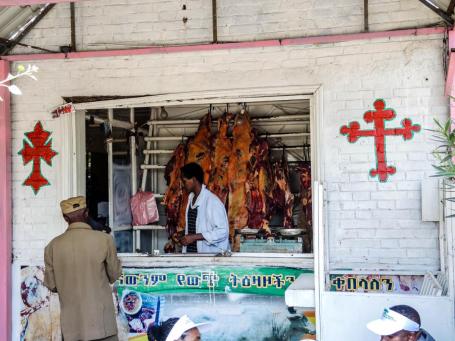Learning Context
Catholics & Cultures provides a brief background of food practices in Catholicism, with relevant links. Before undertaking a project that invites students to delve into specific food cultures, they should possess a broad understanding of food’s role in religion, and know that Christianity does not emphasize food taboos. Students should be able to define and explain:
- What kosher law is and its biblical origins
- Basic food practices in Islam (halal and Ramadan)
- Food taboos in Buddhism and Hinduism
- Basic theology of the Eucharist; concept of the feast in Christianity; fasting an abstinence
- Underlying concept of the spirituality of the body (if relevant to course content)
Teacher resource: Food and Faith in Christian Culture, edited by Ken Albana and Trudy Eden (New York: Columbia, 2011).
Suggested Project
Students, in groups of 2-4, choose a specific food practice in Christianity that they somehow enact in front of the class; they will have to be creative about thinking about how their reenactment will work. They should be assessed on how well the reenactment communicates the underlying idea/belief behind the food practice. The teacher should describe examples of a good reenactment. Students can also approach the topic historically through reenacting significant food scenes.
